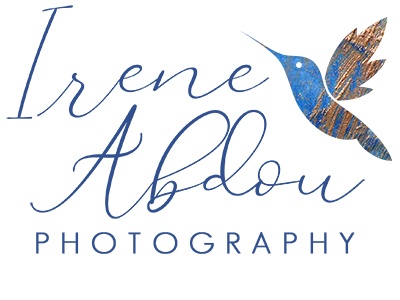Learn Photography: Secret No. 1 of the Exposure Triangle
Saturday, January 23, 2010 | By: Irene Abdou Photography, LLC, Maryland Photographer
Over the past year, I’ve noticed that at least half of the new photography students who come to me bring along with them a misconception about the relationship between shutter speed and exposure. I’ll ask them how they decide to use a slow vs. fast shutter speed, and they’ll say something like, “When it’s bright outside, I know I have to use a fast shutter speed to block out the sun.” Well, actually, that’s not exactly true… That’s really not the criteria you should be using to decide on a fast or slow shutter speed. Rather, it’s really about your photographic vision. Do you want to freeze the action or creatively express movement through blur? Do you want everything in the photograph to be in focused, or do you want a blurry background?
There’s something called the “exposure triangle,” the interrelationship between aperture, shutter speed, and ISO. Understanding this exposure triangle is an absolute fundamental of photography. Aperture is the diaphragm opening inside the camera lens. How big the aperture is regulates how much light enters the camera during any given period of time. In contrast, shutter speed refers to how long the shutter remains open (whether it closes fast or closes slow), which regulates the length of time that light can enter the camera. (ISO refers to the sensitivity of the camera sensor to light, but for the sake of simplicity, I’ll leave ISO for a future discussion.)
So, it may be bright outside, but that doesn’t mean that you have to use a fast shutter speed to block out the light. Sure, you could use a faster shutter speed in combination with a larger aperture, but you could just as well use a slower shutter speed in combination with a smaller aperture. Either combination can give the exact same exposure. So how do you decide then? Fast or slow shutter speed? Large or small aperture? It comes down to your creative vision.
Secrets of the Exposure Triangle, #1: Using Shutter Speed to Creatively Express Movement
Sometimes – or even most of the time – you probably want everything in focus…you want to freeze the action…see that basketball player frozen in mid-jump in the air, see that runner cross the finish line, or in the case of the photo below, see that bale of hay frozen in mid-air as it’s flung into the fire…so, you use a fast shutter speed. In this photo, I used a shutter speed of 1/160 seconds with an aperture of f/8. Had I wanted to show the woman as a blur of motion instead of frozen in time, I could have slowed my shutter speed by 3 “stops” to 1/20 seconds. As that would have increased the time that the shutter is open, thus allowing 3 stops more of light through, that would give me an overexposed image, so to accomodate the slower shutter speed, I would have “stopped down” my aperture by 3 stops to make the opening of the lens diaphragm smaller, thus decreasing the amount of light passing into the camera during the time the shutter is open. So you see, it doesn’t matter how sunny it is – you can manipulate shutter speed and aperture to get the correct exposure, while also achieving your desired creative vision.
In the village of Kalabougou near Segou, Mali, women of the numu blacksmiths population have worked for centuries as traditional potters. A 7-day fabrication cycle leads to the weekly Saturday afternoon firing of the kilns, in which large stacks of pots are covered with grass and set on fire. A shutter speed of 1/160 seconds is sufficiently fast to freeze the bale of hay in mid-air.
In the image below, I wanted to show this children’s carnival ride as a complete blur of motion. In reality, the ride was not moving that fast, and had I wished to clearly show each child on the ride, I could have used a shutter speed of perhaps 1/120 seconds. But I thought it would be more interesting to use a slow shutter speed. In the photo below, I used a shutter speed 5.0 seconds with a correspondingly small aperture of f/22 to get a proper exposure. With this slow shutter speed, instead of seeing a group of children on the carnival ride, we see just streaks of motion, giving the impression that the ride is spinning very quickly!
A slower shutter speed (5 seconds) renders the whirling children on this carnival ride into circular trails of light at the Montgomery County Agricultural Fair in Gaithersburg, Maryland. And that, my friends, is secret #1 of the exposure triangle: use shutter speed to creatively express movement
Does this post pique your interest?






Leave a comment
0 Comments